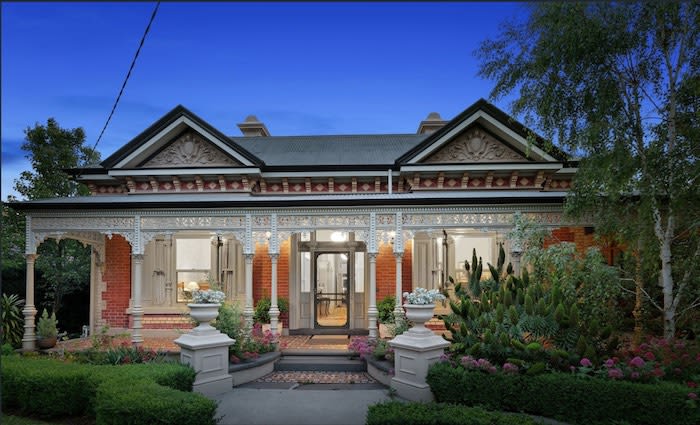Five hotspots you may not think of: Hotspotting's Terry Ryder
After several years of investors achieving easy growth in our two biggest cities, the national real estate landscape has changed.
Investors need to look elsewhere to find the upwardly-mobile markets, and it’s not so easy to find them because mainstream media is writing about the Sydney-Melbourne downturn and generally ignoring the rising markets in other parts of the nation.
Hotspotting’s new Top 10 Best Buys reports highlights the new growth markets, which are occurring in our smaller cities and the regions.
Here are five possibilities, many of them places you might not have thought of …
BELCONNEN District, ACT
I’ve often referred to Canberra as the Goldilocks of Australian real estate - not too hot, not too cold, just right. It continues to show a high level of consistency, especially with sales activity.
But, amid that familiar consistency, there is evidence of recent uplift. The Winter 2018 survey for The Price Predictor Index identifies an increasing number of Canberra suburbs with growth trajectories.
That quarterly survey also shows that the BELCONNEN District is the clear market leader in Canberra, by a considerable margin. It has seven rising suburbs – including Bruce, Florey, Flynn, Holt and Macgregor - and others with steady sales performance.
The strong sales data reflects other statistics depicting a strong Canberra market. Vacancies remain below 1 percent (only Hobart has lower vacancies among the capital cities), rents are rising strongly and there is evidence of solid price growth, notably in the Top End suburbs with median prices above $1 million.
Some forecasters predict Canberra will lead the capital cities on price increases in the next few years, with BELCONNEN suburbs likely to be at the forefront of the growth.
Port Adelaide precinct, South Australia
Port Adelaide may have missed out on the AFL finals, but its real estate market looks like a winner.
The Port Adelaide Enfield LGA is now one of the busiest markets in the SA capital, with a number of its suburbs attracting rising demand.
Defence Force contracts totalling $89 billion and other government initiatives are set to launch Port Adelaide into a new stratosphere.
The Osborne Naval Shipyard is undergoing a $535 million upgrade to accommodate the building of 40 new Defence craft; 500 public servants are being moved into the precinct; and a new rail spur will link the Port’s commercial centre and the Dock One residential precinct to the Adelaide CBD.
These and several smaller projects are creating much-needed jobs, turning historic Port Adelaide into a thriving residential, commercial and tourist destination.
Bendigo, Victoria
Bendigo (pictured top) has long been one of Victoria’s key regional centres, with growth thanks to its steady local economy, proximity to Melbourne and good transport links to the capital – especially now the $5 billion Regional Rail Link has been completed.
Its economic prospects have improved with the $630 million re-development of Bendigo’s hospital, private sector plans to develop the city’s first master-planned residential community, and the awarding of a $1.3 billion Defence contract to a Bendigo-based business.
Bendigo benefits economically from a number of major companies which are based locally but perform nationally – including Thales, the company that received the Defence contract recently.
It has had steady long-term price growth (averaging around 5% per year) in its housing market but it remains affordable, with solid rental yields available for investors (most suburbs have median yields between 4.5 and 5.5 percent).
And recently, sales activity has increased, boosted by both home-buyers and investors out of Melbourne seeking affordability and growth. Most of Bendigo’s suburbs have median house prices between $250,000 and $380,000 – and prices are now starting to rise.
Stirling LGA, WA
The Stirling LGA is one of four precincts in the Perth metropolitan area leading the recovery in the Perth property market, following the city’s four-year real estate downturn.
Properties across this precinct maintained a steadier performance than most Perth locations throughout the recent economic downturn - and now 10 of its suburbs have rising markets, including Carine, Doubleview, Gwelup, Innaloo, Joondanna and Tuart Hill..
The City of Stirling offers a leisurely seaside lifestyle, being home to the internationally renowned Scarborough Beach. Trendy bars and cafes impart a youthful vibrancy, attracting a steady stream of 20–40-year-olds.
Further adding to the region’s appeal are the shopping and education facilities, coupled with good transport links to the Perth CBD.
The Stirling LGA has some affordable suburbs with medians in the $300,000s, but most suburbs are middle-market areas with typical prices in the $600,000s and $700,000s.
Queanbeyan, NSW
The proximity of Queanbeyan (now part of the newly-formed Queanbeyan-Palerang Regional Council area) to the nation’s capital is paying dividends for local property markets.
The region is experiencing strong population growth, unemployment is low, new housing estates are under construction and there are plans for the nearby Canberra International Airport to become a 24-hour freight hub.
But the most appealing aspect of Queanbeyan is its affordability relative to Canberra, with median prices for both houses and units below those in the national capital. It’s also helped by NSW incentives for first-home buyers.
Property sales activity in Queanbeyan increased in 2016, leading it to become a standout region for growth, and the uplift continued in 2017 and into 2018.
With Canberra forecast to be one of the nation’s leading cities for price growth in the next few years, Queanbeyan’s links to the capital are expected to boost the local market.
Good rental yields are another attraction, with several suburbs having median yields around 4–5% for houses and 5.5% for units.
Terry Ryder is the founder of hotspotting.com.au
twitter.com/hotspotting
